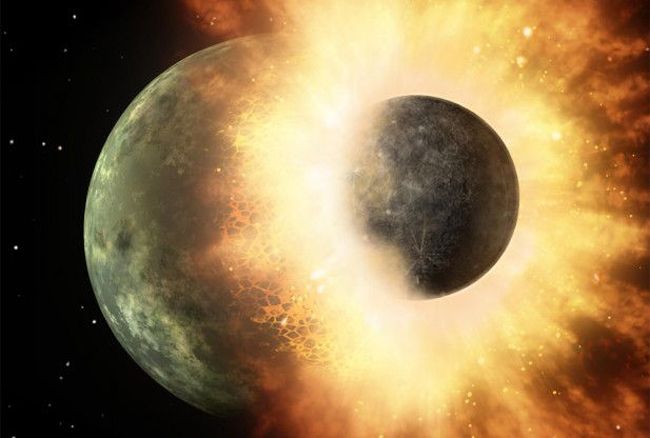'Giant impact' theory of moon's formation gets another boost
By Elizabeth Howell 3 hours ago
Scientists have found yet more differences between Earth and moon rocks.

Earth's moon is thought to have formed when a Mars-sized object, called Theia, slammed into the
early Earth 4.4 billion years ago, blasting out material that later coalesced in to a large satellite as
depicted in this artist's illustration.
(Image: © NASA/JPL-Caltech)
A NASA-led team examined moon rocks brought back to Earth by Apollo astronauts more than 50 years ago. Investigating the samples with advanced tools not available to researchers in the 1960s and 1970s, the team found further evidence of the "giant impact theory" by focusing on the amount and type of chlorine in the rocks, a new study reports.
The researchers discovered the moon has a higher concentration of "heavy" chlorine compared to Earth, which sports more "light" chlorine. The terms "heavy" and "light" refer to versions of the chlorine atom, known as isotopes, that contain different numbers of neutrons in their nuclei.
Shortly after the mammoth collision occurred, Earth was just able to stay together while pieces of both planets that were blasted into space coalesced to form the moon. Both of these blobby bodies had a mix of light and heavy chlorine isotopes at first, but that mix began to change as Earth's gravity pulled on the newly forming moon.
More:
https://www.space.com/moon-giant-impact-theory-chlorine-isotopes
